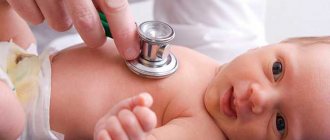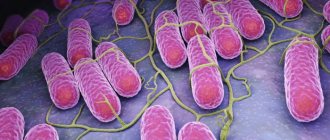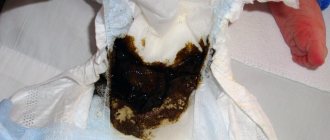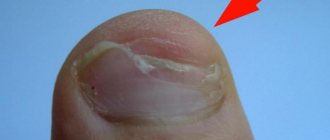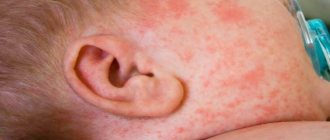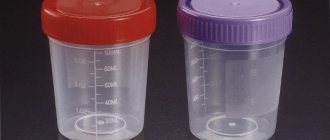Young children are more often susceptible to gastrointestinal diseases, the most common of which is intestinal infection. The focus of this pathology is localized in the gastrointestinal tract, the causative agents are pathogenic viruses and microorganisms of various etiologies (rotaviruses, salmonella, klebsiella, Escherichia, campylobacter, etc.).
The disease develops rapidly and has a severe course. Children under one year of age tolerate it especially poorly. It is important to begin treatment immediately to prevent dehydration and other serious complications.
Acute intestinal infections occupy a leading place among infectious diseases, second only to ARVI in the number of developments
Types of intestinal infections and pathogens that provoke their development
Intestinal infections are divided into two main types - they are bacterial and viral. Depending on the etiology of the provoking agent, the symptoms of the disease in children differ and the correct treatment is selected. Each type of OCI in children is further divided into subtypes, the characteristics of which are presented in the tables below.
Bacterial form of OCI
| Types of bacterial infection | Characteristic symptoms | Peculiarities |
| Salmonella |
| The infection enters through milk, eggs, butter and meat. You can get infected not only from people, but also from pets. This form of pathology is especially difficult for children aged 2-3 years. Sometimes toxic shock additionally develops (cerebral edema, renal and heart failure are formed). |
| Staphylococcal |
| Staphylococci live in the body of every person, but weakened immunity and other factors (for example, consumption of stale food) lead to their active reproduction. The disease is difficult to treat because pathogenic bacteria quickly adapt to the effects of antimicrobial agents. |
| Typhoid |
| Infection occurs from a sick person or a bacteria carrier. Pathogenic microorganisms are excreted in feces and urine, after which they spread into the environment. Severe disease can lead to coma. |
| Escherichiosis |
| Most often, this bacterial infection appears in newborns with underweight, as well as under the age of 5 years. Pathogenic bacilli live in the household for several months, so the risk of infection is very high. |
What organs are affected by intestinal infections?
Intestinal infections can be classified according to the organ that has been “attacked” by microbes:
- gastritis - inflammation of the gastric mucosa. It manifests itself as pain in the abdomen above the navel, constant nausea, and repeated vomiting. Diarrhea is not typical, but there may be loose stools 1-4 times. Acute infectious gastritis usually develops when infected with Staphylococcus aureus (food poisoning) or viruses.
- gastroenteritis - inflammation of the mucous membrane of the stomach and small intestine. It manifests itself as pain in the abdomen around the navel, vomiting, frequent stools, first mushy, then watery, with undigested food debris. Usually develops with viral intestinal infections or damage by pathogenic strains of Escherichia coli.
- enteritis - inflammation of the mucous membrane of the small intestine. It manifests itself as frequent watery stools without nausea, vomiting and abdominal pain. Enteritis can develop, for example, with cholera (but also in other cases).
- gastroenterocolitis - inflammation of the mucous membrane of the stomach, large and small intestines. It manifests itself as abdominal pain, pain during bowel movements, frequent loose stools, sometimes with blood and mucus. Characteristic for salmonellosis.
- enterocolitis - inflammation of the intestinal mucosa (small and large). It manifests itself as severe abdominal pain, frequent urge to have bowel movements, loose stools (sometimes in the end only mucus is released). Characteristic of salmonellosis and dysentery.
- colitis - inflammation of the large intestine. It manifests itself as pain in the lower abdomen, diarrhea, sometimes with blood and mucus. Characteristic of dysentery.
Causes of intestinal infection and routes of infection
Infection occurs through airborne droplets and household routes. Pathogenic viruses and bacteria are released into the environment along with the patient’s saliva, feces and vomit. At the same time, when they get on household items and food, they remain in an active state for up to five days.
The infection enters the human body mainly through dirt. The following causes of OCI are identified:
- neglect of personal hygiene rules (dirty hands, fruits, vegetables, dishes);
- insufficient heat treatment of food;
- improper storage of products;
- drinking poor quality water (poor filtration and purification);
- swimming in polluted waters and public pools;
- unsanitary living conditions;
- unbalanced diet, leading to decreased immunity.
Once in the oral cavity, pathogenic microorganisms penetrate the gastrointestinal tract. After this, they cause inflammation of the mucous membrane of the intestines, stomach and other digestive organs.
The causative agents of acute intestinal infections are microbes and viruses that enter the body with dirt
The peak of incidence is observed among children under 5 years of age, mainly in the autumn and summer. Experts note that breastfed babies become infected less often, as they are protected by the mother’s immunity.
How does intestinal infection occur?
Infection occurs when a pathogenic virus or bacteria enters the child’s body, namely, its gastrointestinal tract. Infection with intestinal infections in children is influenced by three most important factors:
- Human carriers (that is, you can become infected from a sick person, for example, through a kiss or by sharing an apple with him);
Food (you can catch a pathogenic virus or bacteria by eating a low-quality or stale product);
Water quality (this is the most common and widespread way of spreading intestinal infections - through contaminated water).
Incubation period
In children of any age, the incubation period of intestinal infection lasts from 12 hours to 5–6 days. After this, the acute stage of the pathology begins, which lasts about a week. During this period, the patient retains the main symptoms (high fever, nausea, diarrhea), which pose a great danger to health.
Then the body gradually develops immunity to the pathogen, and health improves. Re-infection after recovery is impossible.
Diet during and after illness
Against the background of an ongoing illness, any food can aggravate the situation. This circumstance is explained by the fact that during pathology in the gastrointestinal tract, its activity decreases.
For this reason, when dealing with intestinal infections in children, it is important to follow a diet .
It is recommended to feed the baby during illness as he was fed before. This is especially true for those children who suffer from underweight; fasting is strictly contraindicated for them.
But if the child does not suffer from underweight, then during illness it is recommended to switch him to a liquid vegetarian diet. Liquid dishes based on vegetables and cereals are ideal.
During the period when the disease has subsided, you need to try to restrain your appetite, even though it will ask for various goodies. Under no circumstances should you stop eating a vegetarian liquid diet for at least 5-6 days.
Signs of the disease
Intestinal infection in children progresses very quickly - the first signs of pathology appear within three days. The patient experiences: general weakness and sleep disturbance, loss of appetite, the skin becomes pale, the temperature rises sharply (up to 39 degrees), vomiting and loose stools occur (we recommend reading: what to do if a child has loose stools and a temperature of 38 degrees?) . In rare cases, there may be skin rashes and itching.
The first signs of an intestinal infection will appear within 3 days after infection
Characteristic symptoms of intestinal infection in children
Symptoms of intestinal infection are always expressed in acute form. The main and most dangerous of them is diarrhea. Defecation occurs more than 10–15 times a day. Fecal masses have a liquid structure, contain mucus and bloody inclusions. If no measures are taken to stabilize the patient's condition, dehydration will develop. Characteristic symptoms of OCI:
- severe vomiting and frequent urge to vomit (regardless of food intake);
- loose stools;
- high body temperature;
- complete lack of appetite;
- fatigue, lethargy;
- head and muscle spasms;
- constant sleepy state;
- abdominal pain;
- throat hyperemia;
- runny nose;
- cough;
- coated tongue.
Diarrhea is one of the most dangerous symptoms of an intestinal infection, which can lead to dehydration.
Changing the behavior of newborn babies
Symptoms of OCI in infants and older children are similar. The disease is characterized by a rapid progression, which leads to dehydration and weight loss. This situation is dangerous for the health and life of the baby, so urgent medical attention is necessary. How to recognize pathology:
- capricious state - crying for no reason, the child almost always sleeps, but is very restless - draws in his legs, screams in his sleep, etc.;
- refusal to eat and excessive vomiting after it;
- diarrhea appears, foam, remains of undigested food, mucus, blood may be present in the stool (we recommend reading: how to treat bloody diarrhea in a child?);
- frequent regurgitation;
- colic in the abdomen;
- the temperature rises (37.5–39).
Intestinal infections in children: situations when a child needs a doctor
Intestinal infections (like any other) in children can be either viral or bacterial - the difference, as the names indicate, is in the nature of the pathogen. Among viral intestinal infections in children, the most common is rotavirus.
In addition to rotavirus, the most common intestinal infections in children include:
However, do not be afraid or despair! Pediatricians say that more than 90% of all cases of intestinal infections in children can be overcome without the use of any special medications, at home, just by observing measures against dehydration of the child’s body.
However, there remains an insidious and terrible 10% of intestinal infections in children - these are those cases of the disease when there can be no talk of any self-medication. When the main task of the parents and relatives of the baby is to deliver the child to the hospital to infectious disease professionals as quickly as possible.
Methods for diagnosing the disease
If a child exhibits signs of OCI, parents should immediately seek help from a specialist so as not to worsen the condition.
The pediatrician conducts a patient interview, visual and tactile examination. This is enough to establish a correct diagnosis and prescribe treatment. In order to identify the causative agent of the disease, the following diagnostic studies are carried out:
- bacteriological culture of vomit and feces;
- scraping from the anus;
- coprogram (analysis of feces);
- laboratory blood test for TA.
Treatment at home
After the first symptoms of an intestinal infection appear, parents need to call a doctor at home. It is prohibited to visit the clinic in this condition - the disease is contagious in any form.
Treatment at home includes several methods that are used in a comprehensive manner (we recommend reading: using the drug Regidron at home for a child). When the first signs of an intestinal infection develop in a child, you should consult a doctor. Complex therapy should include both antibacterial agents that act on the cause of the disease, and agents to restore water-salt balance, as well as antispasmodics and other agents to relieve symptoms. One of the recommended drugs for the treatment of intestinal infections in adults and children is Macmiror®1. It has high activity against a large group of microorganisms that are most often the cause of illness. The low toxicity of the drug makes it accessible and convenient to use in children and adolescents. In addition to taking medications, it is recommended to adhere to a special diet and be sure to monitor the child’s drinking regime.
Intestinal infection in children - treatment
Before treating an intestinal infection in children, it is necessary to identify the nature of the disease. This can only be done by a pediatrician or other specialist doctor. It is important to exclude appendicitis, pancreatitis and other serious pathologies from the list of possible diseases. Once the diagnosis is made, adequate therapy is prescribed. It must be comprehensive, that is, include the organization of therapeutic nutrition, elimination of symptoms of the disease and its causes, fluid replenishment and other measures.
When is hospitalization indicated?
Therapeutic actions do not always have a positive dynamics of the disease. When, in addition to the main symptoms, droplets of blood appear in the vomit or stool, the child should be hospitalized immediately.
If the child is not recovering and symptoms of dehydration occur, it is better to go to the hospital to receive qualified medical care.
Inpatient treatment is also indicated if dehydration occurs. In a child aged 2–3 years, dehydration is expressed as follows:
- lack of urination for more than 4-6 hours;
- dry lips;
- the baby cries without releasing tears;
- dry oral mucosa, salivation completely disappears;
- skin looks tight;
- In infants, the eyes and fontanel become sunken.
If the patient experiences the above phenomena, parents should urgently call an ambulance. For young children, such a condition is fraught with disruption of all vital systems of the body and death within a few hours. It is possible to stabilize the situation only in a hospital setting.
Doctors will promptly carry out rehydration procedures - administering special intravenous solutions, and also prescribe additional medications.
It is impossible to say how long such measures will be indicated - it depends on the positive dynamics of the disease. In what cases is hospitalization also indicated:
- acute (paroxysmal) pain in the abdomen;
- diarrhea in infants;
- vomiting does not stop and the child refuses to drink water;
- urine turns brown;
- feverish condition.
Complications of acute intestinal infection
If therapy is carried out incorrectly/untimely, dehydration of the body, disruption of the normal functioning of internal organs, intestinal dysbiosis, and a decrease in the defense of the immune system may occur. Severe pathology leads to the following complications:
- neurotoxicosis – the patient experiences a disorder of consciousness, sleep disturbance, hallucinations and convulsions are possible;
- circulatory disorder - blood pressure decreases, the skin becomes pale, problems of the cardiovascular system develop;
- renal failure - scanty urine output, dull pain in the lower back;
- hypovolemic shock – develops due to dehydration, sunken eyes, weight loss.
If you neglect the treatment of an intestinal infection, it can provoke the development of serious complications.
How to feed your baby immediately after an intestinal infection
Let us remind you: during most intestinal infections, a child experiences temporary enzymatic deficiency - that is, the activity of enzymes is significantly reduced for some time. But more than that, this deficiency persists for some time after the illness. This is extremely important to take into account when creating a menu for a recovering child.
The situation often goes like this: the baby recovers from an intestinal infection, his condition improves and his appetite awakens. And so the parents (and especially the grandmothers) joyfully put food on the table, as in that famous film - “fatter and thicker.” But physiologically, the child’s body is not yet ready for such feasts - he simply does not have the enzymes to digest such a meal. And so the under-digested food enters the intestines, where it begins to ferment and rot, becoming a new reason for the child’s stomach pain.
Prevention of acute intestinal infection
To prevent infection with OCI, a child should be taught cleanliness from an early age. As a preventive measure, it is enough to follow basic rules of personal hygiene:
- washing hands before eating, as well as after visiting the toilet, public places, street walks;
- hygienic processing of fruits/vegetables.
If there is an infected person in the family, then the patient is treated in a separate room, he is given an individual towel, bed linen and utensils. The premises are periodically disinfected and ventilated.
After each visit to the toilet, the toilet/children's potty is treated with a disinfectant. Contact with healthy family members should be kept to a minimum.
Pediatrician of the 2nd category, allergist-immunologist, graduated from the Belarusian State Medical University of the Federal Agency for Health and Social Development. Read more »

